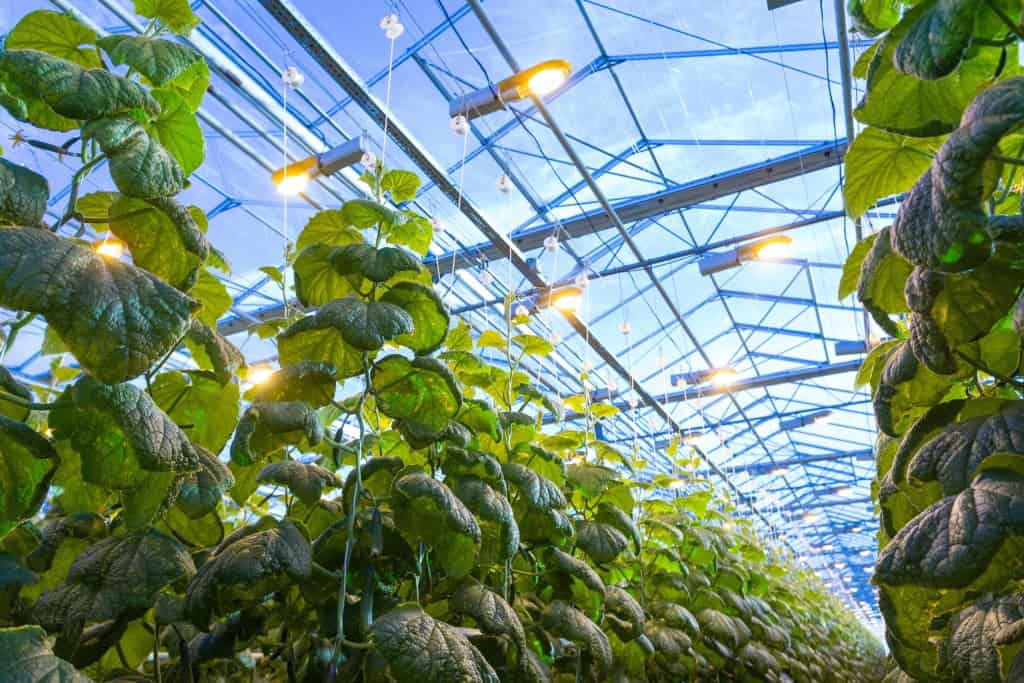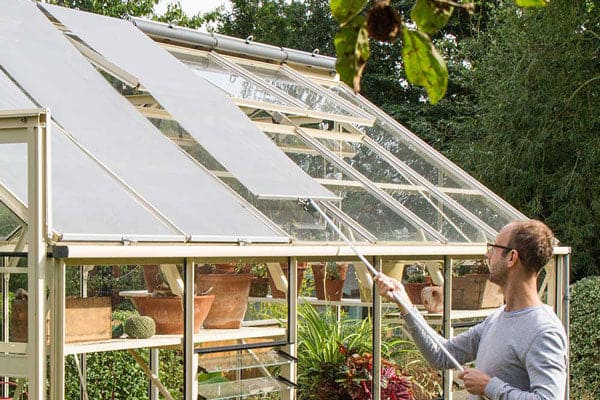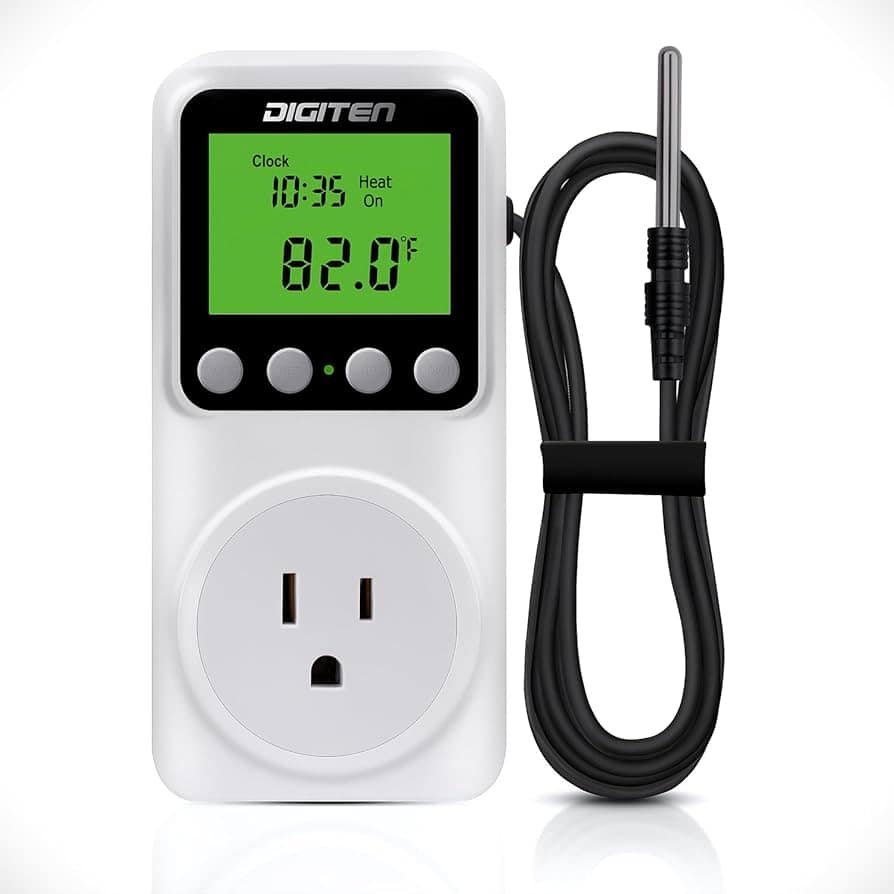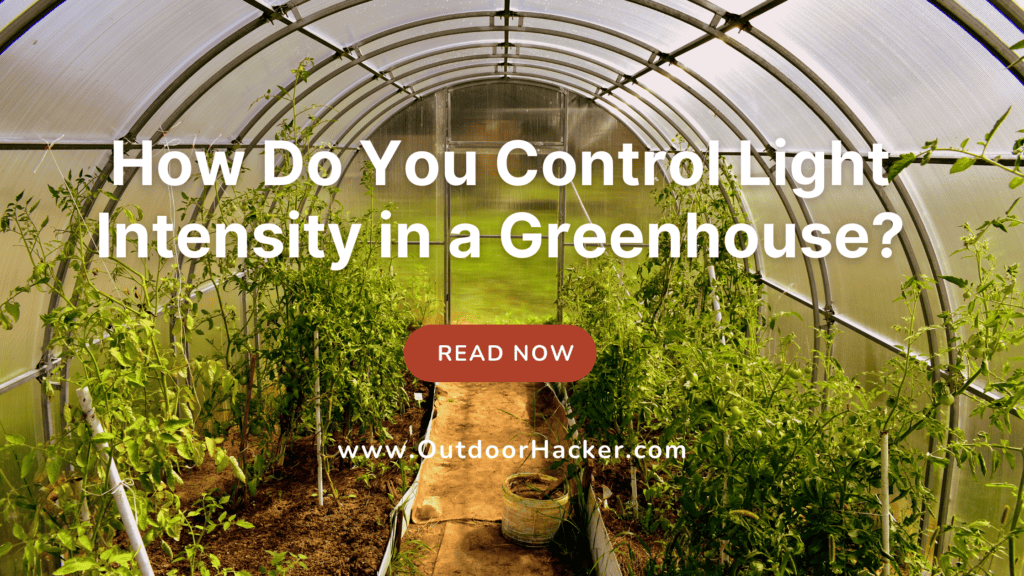The strength or brightness of light is called intensity. The higher it is inside a greenhouse, the more energy that’s present for plants to use for photosynthesis. Controlling light levels can mean the difference between a failed crop and a bountiful harvest.
Luckily, there are several ways to influence the light intensity in your greenhouse. Here how to Control Light Intensity in a Greenhouse and you should consider when building or upgrading your structure.
Table Of Contents
What Is the Ideal Greenhouse Temperature & Humidity?

This question can be difficult to answer since the ideal conditions depend on what kind of plants you want to grow. For instance, tropical species require higher temperatures and humidity levels, whereas those native to cooler climates need cooler and drier environments in their greenhouse.
There are some general guidelines you can abide by, however. For most plants, an ideal temperature range should fall between 18-24 degrees Celsius while ideal humidity range should range between 40-60% – both can be slightly adjusted based on what plants you’re cultivating.
Temperature and humidity fluctuations can stress plants and make them more prone to diseases, so maintaining consistent levels is of the utmost importance in greenhouse environments. There are various methods available for controlling these levels, such as fans, humidifiers and dehumidifiers.
How Do You Control Light Intensity in a Greenhouse?
1. Greenhouse Structures

A greenhouse isn’t made entirely of glass or plastic — it also has a frame and glazing bars, the structural pieces between the panels that hold them together. Some greenhouses also have gutters.
These opaque elements can block out a surprising amount of light. The frame alone may reduce up to 10% of the light entering a greenhouse. Maximize intensity by choosing a greenhouse with thinner structural elements.
Roof shape also impacts how much light penetrates the greenhouse. A curved roof maximizes light intensity, while a flat roof limits the amount coming in.
2. Covering Material Type
The material you use to cover a greenhouse also influences the light intensity. For example, some brands diffuse light more strongly than twin-walled polycarbonate coverings. It’s a good idea to research to determine what would work best for your structure. One of the process of Control Light Intensity in a Greenhouse for better.
Diffusing light always lowers its intensity. That can be a good thing in some cases — it prevents plants from getting sunburned or withering in the heat. Other plants require more light.
3. External Shading

The amount of external cover you use on a greenhouse — and where you place it — influences the light intensity inside. For example, you might cover part of the greenhouse with aluminum-coated polyester and another section with a black polypropylene cloth shading screen, which offers high UV light protection. Shade cloths come in different percentages so you can directly influence the amount of light getting in.
Shading compound, also called greenhouse paint — is a type of glaze you apply to polyethylene or glass greenhouse windows. It’s available in white or green, and once you apply it, it is semipermanent. This reduces heat buildup by lowering light intensity, and it can also prevent light pollution from escaping the greenhouse if you use grow lights at night.
4. Internal Shading
Internal shading is inside the greenhouse, and a common type is curtains. Shade curtains act as a thermal blanket in the winter and keep light out in the summer.
In addition to lowering light intensity, curtains can reduce the temperature and make a greenhouse more comfortable to work in. Making the building cooler also reduces plants’ water consumption. Up to 60% of a household’s water is used for garden and lawn maintenance, so conserving that extra bit can be crucial.
5. Reflective Surfaces
One clever way to maximize light intensity in a greenhouse is to make the indoor surfaces light-colored and reflective. For example, white flooring will reflect more light in the interior than a dark floor. Hardware stores and garden supply companies sell white reflective flooring designed for greenhouses.
6. Location and Orientation
How a greenhouse is oriented greatly affects how much sunlight gets inside. In the Northern Hemisphere, the long side of a greenhouse should face south if you want to maximize light. East- and west-facing windows only receive around 60% of the light intensity a southern exposure gets. Northern exposures get a mere 20% of the light intensity a south-facing greenhouse soaks up.
The opposite is true in the Southern Hemisphere — greenhouses should face north to maximize sunlight.
Increase light intensity by building a greenhouse far from buildings and trees that could cast shadows on it. Even structures that don’t cast long shadows in the summer might do so in the winter when the sun sits lower in the sky.
7. Artificial Lighting

Artificial grow lights are the easiest way to increase light intensity in a greenhouse and Control Light Intensity in a Greenhouse. You can put them on a timer to ensure they’re on for the same length of time every day.
Alternatively, you can use bulbs with sensors that detect ambient light levels. When they drop — due to snow or cloud cover, for example — the grow lights will automatically turn on. You can also use them to extend the natural photoperiod for certain crops, helping them grow bigger or faster despite the lighting outside. Different colors cause plants to behave differently — for example, red light encourages flowering and fruit production.
8. Dust Accumulation
Dust and algae naturally settle on a greenhouse’s inner and outer walls. The more debris accumulates over time, the lower the light intensity will penetrate the greenhouse’s interior.
It’s important to wash the walls periodically to remove built-up gunk. Typically, you can clean a greenhouse with a few drops of dish soap mixed in a bucket of water. Use a soft sponge or car wash mop to gently wipe down the walls without scratching them. Then, rinse with a hose.
Why Does Controlling Light Intensity Matter?
Light is one of the main factors that influences plant growth. Seedlings that receive inadequate light while developing their first true leaves will become thin-steamed and weak. Even if they recover, they may never grow to their full potential.
However, more light isn’t always better. Different plants require various light intensities, with sun-loving plants like tomatoes thriving under intense levels and lettuce requiring less.
Even the same species of plant may require different light intensities during its growth cycle. For example, older plants typically need more light than seedlings.
In other words, controlling the light intensity in a greenhouse determines which kinds of plants can grow inside and how well they will develop. You can use a light sensor to precisely read the light intensity — measured in units called lux or footcandles.
Best Greenhouse Temperature Control Tools:

Maintaining an ideal temperature in a greenhouse can be challenging during extreme weather, but with the appropriate tools it can be accomplished effectively.
Thermostats are one of the most reliable tools for climate control in greenhouses, helping maintain an even temperature by switching on and off heating or cooling devices as necessary.
Greenhouse heaters come in various forms, such as forced-air, radiant and steam. Forced-air heaters are the most commonly used in greenhouses as they use heated air circulating around the space to heat objects directly; radiant heaters emit infrared radiation which directly heats objects within the greenhouse; while steam heaters use steam as heat source in larger greenhouses.
Cooling systems are essential to keeping greenhouse temperatures ideal. Air-cooled systems use fans to circulate cool air throughout the space while water-cooled systems use liquid to remove heat from the air; both systems may be combined for maximum effectiveness.
Ventilation is another effective means of maintaining the desired temperatures in greenhouses. By exchanging air within and outside, ventilation helps regulate temperatures to within an acceptable range and maintain comfort conditions in the space.
Opening and closing the greenhouse’s vents and doors can help to regulate its temperature. When temperatures are scorching hot, opening the vents allows hot air to escape while closing them will help to trap heat within.
Utilizing multiple of these tools can assist in maintaining an ideal temperature environment in your greenhouse and creating a space suitable for both plants and humans alike.
Shine On:
Controlling your greenhouse’s light levels will help you become a better gardener. Whether you want to grow giant cacti, juicy tomatoes or a bromeliad garden that rivals the Amazon rainforest, influencing the amount of light that comes in is the first step. Master this skill and you’re well on your way to having a green thumb.








